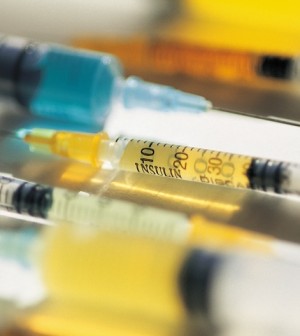- Navigating Your Midlife Crisis: Embracing New Possibilities
- City Raccoons Showing Signs of Domestication
- Mapping the Exposome: Science Broadens Focus to Environmental Disease Triggers
- One Week Less on Social Media Linked to Better Mental Health
- Your Brain Changes in Stages as You Age, Study Finds
- Some Suicide Victims Show No Typical Warning Signs, Study Finds
- ByHeart Formula Faces Lawsuits After Babies Sickened With Botulism
- Switch to Vegan Diet Could Cut Your Greenhouse Gas Emissions in Half
- Regular Bedtime Does Wonders for Blood Pressure
- Dining Alone Could Mean Worse Nutrition for Seniors
Health Highlights: July 29, 2014


Here are some of the latest health and medical news developments, compiled by the editors of HealthDay:
$1,000 Pill Now Leading Treatment for Hepatitis C
Despite a price tag of $1,000 per pill, and $84,000 for a full course of treatment, the new hepatitis C drug Sovaldi has quickly become the therapy of choice for patients infected with the liver-destroying virus, new data shows.
Sovaldi, which only became available in December, is taken for 12 weeks and effectively cures hepatitis C infection.
According to data from IMS Health, U.S. prescriptions for hepatitis C medications jumped from 6,200 during the month of May in 2013 to more than 48,000 in May of this year — with three-quarters of prescriptions being written for Sovaldi, the Associated Press reported.
About 62,000 new patients tried Sovaldi within the first 30 weeks of its approval, making it the most successful new hepatitis C drug ever, the AP said.
But the drug’s high price tag has stirred controversy. Senators Ron Wyden (D-Ore) and Charles Grassley (R-Iowa) have asked maker Gilead Sciences Inc. to justify the cost of Sovaldi. According to AP, 2011 filings with federal market regulators by Pharmasset, the company that originally developed Sovaldi, estimated the cost of a course of treatment at $36,000. Gilead later went on to acquire Pharmasset.
However, Gilead vice president Gregg Alton defended the $84,000 price tag for the drug. Speaking recently at a public forum supported by the American Enterprise Institute, he said that “to suggest that a cure for a disease like hepatitis C should be priced at $36,000 . . . would put a huge disincentive on investing in cures for our industry.”
—–
Young Soldiers Suffering High Rates of Erectile Dysfunction, Report Finds
New research reveals that young soldiers are three times more likely to report they have erectile dysfunction than their civilian peers.
In a study published recently in the Journal of Sexual Medicine, doctors from the University of Southern California (USC) found that 33 percent of the 367 military men they surveyed reported the symptoms of erectile dysfunction, while 8.4 percent reported symptoms such as low sex drive and ejaculation problems. All of the soldiers were under the age of 40.
The researchers noted there was an association between having post-traumatic stress disorder, depression, anxiety or having been sexually assaulted and the chances of sexual dysfunction, the Military Times reported Tuesday. Soldiers with PTSD showed the most pronounced linkage; they were 30 times more likely to report erectile dysfunction. If they were a sexual assault victim or had depression or anxiety, they were up to 13 times more likely to report sexual dysfunction.
“Although causal ordering is uncertain, it is clear that there is a strong relationship between sexual functioning and psychosocial factors. Specifically, the presence of mental and physical health problems were related to high levels of sexual function problems,” wrote Sherrie Wilcox, research assistant professor at USC’s Center for Innovation and Research on Veterans & Military Families, according to the Times.
“Although these issues were associated with significantly reduced quality of life and happiness, few affected individuals reported receiving treatment,” Wilcox added.
Shortly after the results of the USC study were reported, the Pentagon released data that conflicted with the USC findings, the Times reported.
“Our analyses indicate that fewer than 1 percent of males under 40 in the active duty force in 2013 would be classified as having erectile dysfunction,” Pentagon officials said in a statement, according to the Times.
The discrepancy could be related to differences in methodology, the U.S. Defense Department noted in the statement.
Wilcox and her colleagues have admitted their study has limitations because it was self-reported data, the Times reported, but the researchers added that the two measures they used to gauge sexual dysfunction are highly reliable.
Copyright © 2025 HealthDay. All rights reserved.










